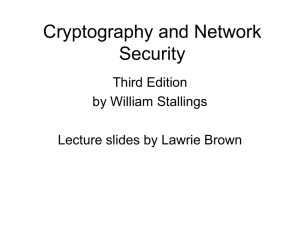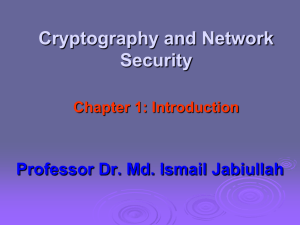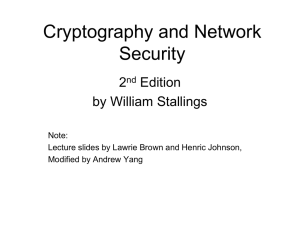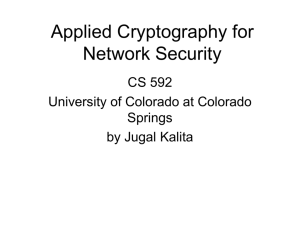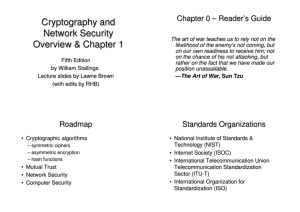544 Computer and Network Security
advertisement
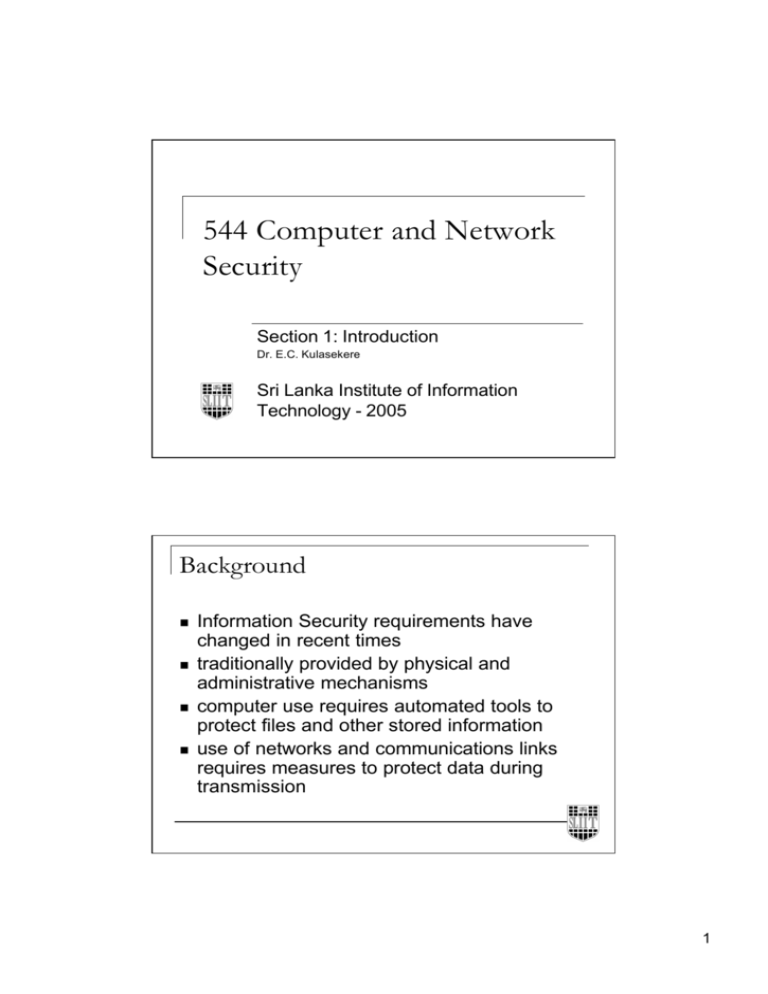
544 Computer and Network Security Section 1: Introduction Dr. E.C. Kulasekere Sri Lanka Institute of Information Technology - 2005 Background n n n n Information Security requirements have changed in recent times traditionally provided by physical and administrative mechanisms computer use requires automated tools to protect files and other stored information use of networks and communications links requires measures to protect data during transmission 1 Definitions n n n Computer Security - generic name for the collection of tools designed to protect data and to thwart hackers Network Security - measures to protect data during their transmission Internet Security - measures to protect data during their transmission over a collection of interconnected networks Services, Mechanisms, Attacks n n need systematic way to define requirements consider three aspects of information security: q q q n security attack security mechanism security service consider in reverse order 2 Security Service q q q q is something that enhances the security of the data processing systems and the information transfers of an organization intended to counter security attacks make use of one or more security mechanisms to provide the service replicate functions normally associated with physical documents n eg have signatures, dates; need protection from disclosure, tampering, or destruction; be notarized or witnessed; be recorded or licensed Security Mechanism n n n n a mechanism that is designed to detect, prevent, or recover from a security attack no single mechanism that will support all functions required however one particular element underlies many of the security mechanisms in use: cryptographic techniques hence our focus on this area 3 Security Attack n n n n n any action that compromises the security of information owned by an organization information security is about how to prevent attacks, or failing that, to detect attacks on information-based systems have a wide range of attacks can focus of generic types of attacks note: often threat & attack mean same OSI Security Architecture n n n ITU-T X.800 Security Architecture for OSI defines a systematic way of defining and providing security requirements for us it provides a useful, if abstract, overview of concepts we will study 4 Security Services n n n X.800 defines it as: a service provided by a protocol layer of communicating open systems, which ensures adequate security of the systems or of data transfers RFC 2828 defines it as: a processing or communication service provided by a system to give a specific kind of protection to system resources X.800 defines it in 5 major categories Security Services of X.800 5 Security Services of X.800 Specific Security Mechanisms of X.800 6 Specific Security Mechanisms of X.800 Classify Security Attacks as n passive attacks - eavesdropping on, or monitoring of, transmissions to: q q n obtain message contents, or monitor traffic flows active attacks – modification of data stream to: q q q q masquerade of one entity as some other replay previous messages modify messages in transit denial of service 7 Model for Network Security Model for Network Security n using this model requires us to: q q q q design a suitable algorithm for the security transformation generate the secret information (keys) used by the algorithm develop methods to distribute and share the secret information specify a protocol enabling the principals to use the transformation and secret information for a security service 8 Model for Network Access Security Model for Network Access Security n using this model requires us to: q q n select appropriate gatekeeper functions to identify users implement security controls to ensure only authorised users access designated information or resources trusted computer systems can be used to implement this model 9 Summary n have considered: q q q q computer, network, internet security def’s security services, mechanisms, attacks X.800 standard models for network (access) security Chapter Readings - Stallings n Chapter 1 pp. 2-16 10

